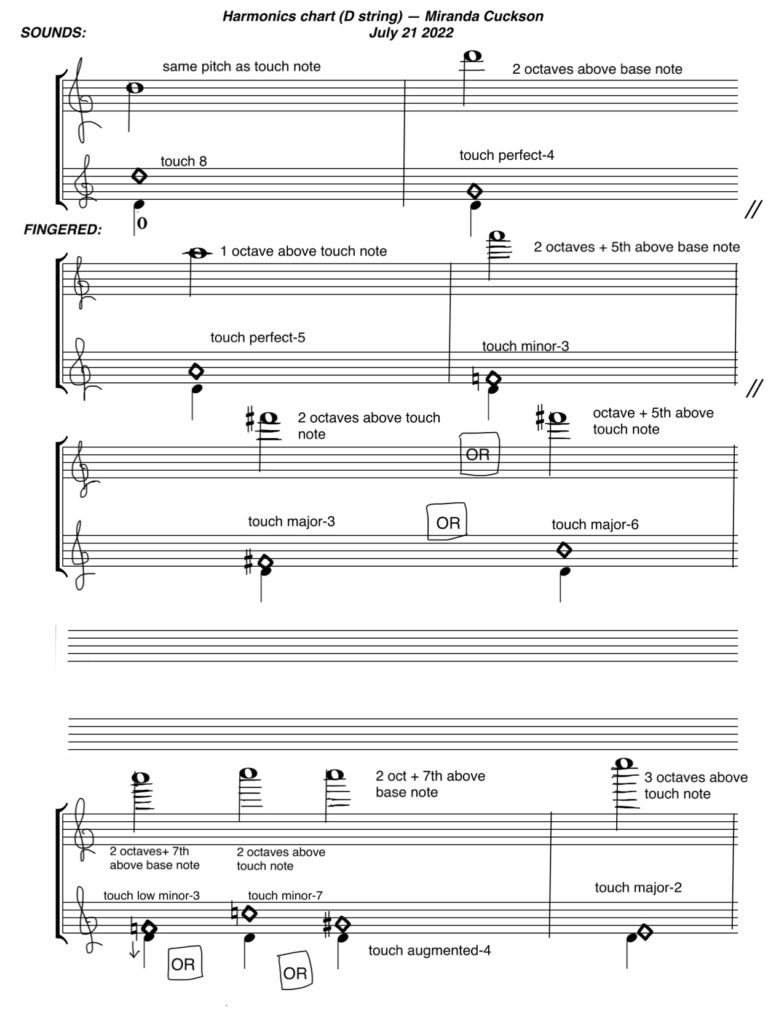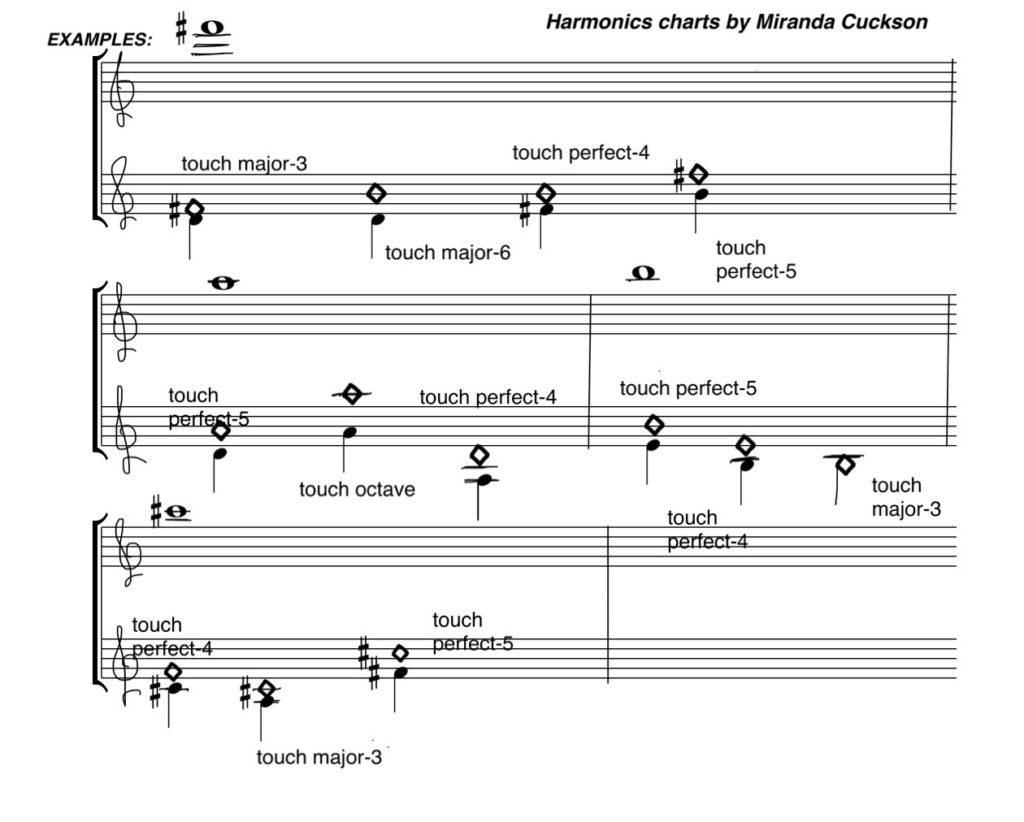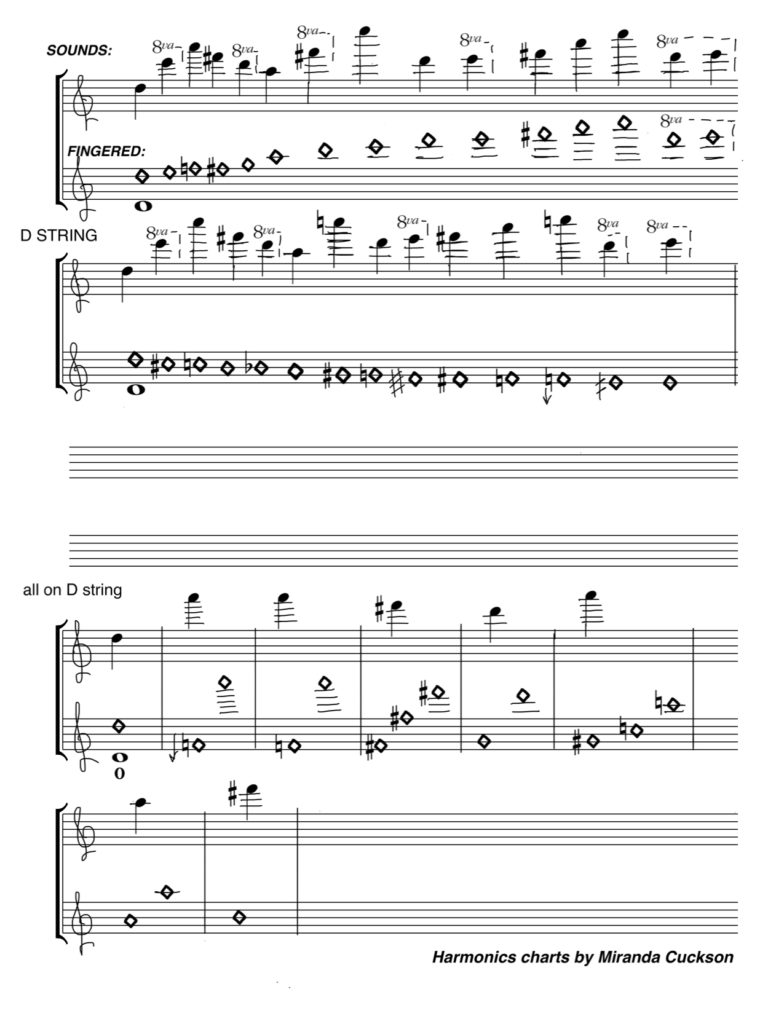Student and professional violinists often ask about harmonics.
.
Mostly, people need more familiarity and knowledge of all the standard harmonics (touch-4, touch-3, touch-5, fingered in the high register, etc) and what pitches they produce.
.
Also, some composers nowadays are using less common harmonics (for example, at the 7th or the lowered minor-3rd) which, while naturally-occurring on the instrument, are more difficult to locate on the string than the more common ones. People are exploring the different timbres and tuning colors that result from these harmonics. To me, that’s what’s interesting about them, along with the polyphonies that are possible (with double-harmonics or a solid tone with a harmonic).
.
Recently I was asked again about harmonics and whether there’s a chart or worksheet. I decided to make one – here it is!
.



.
.
Emphasis is on the touch intervals and what notes they make. The goal is to know, given a specific pitch, how to play that pitch using touch-4, touch-3, touch-5, and high-register harmonics (and -8 or -6 if relevant). Pages 2 and 3 have some examples of harmonics that sound the same pitches.
.
.
At top of page 3 are naturally-occurring harmonics, going up the fingerboard and going down.
.
.
Touch-8, -5, and -4 harmonics are the easiest to do and speak most reliably. Touch-Maj3 and -Maj6 are next in terms of reliability, then touch-min3 and -min7 and -tritone. The rest of the harmonics sound more delicate and are trickier to produce, especially in first position.
.
These charts show the natural harmonics, with an open string (D in this case) as the base note. Touch harmonics can also be produced on a fingered base note (artificial harmonics). Getting them to sound may depend on how high a position it is on the fingerboard (but bow placement/pressure can also help).
These charts show the natural harmonics, with an open string (D in this case) as the base note. Touch harmonics can also be produced on a fingered base note (artificial harmonics). Getting them to sound may depend on how high a position it is on the fingerboard (but bow placement/pressure can also help).
..
With a little searching online, I found two other charts, differently formatted. One is by Anne Leilehua Lanzilotti, the other by Paul Zukovsky. Also just brought to my attention: a remarkable 50-page treatise “I suoni armonici: classificazione e nuove tecniche” on violin harmonics by Enzo Porta, published by Ricordi in 1985, and Michelangelo Abbado’s “Tecnica dei suoni armonici per violino” published in 1934, also by Ricordi.
.
